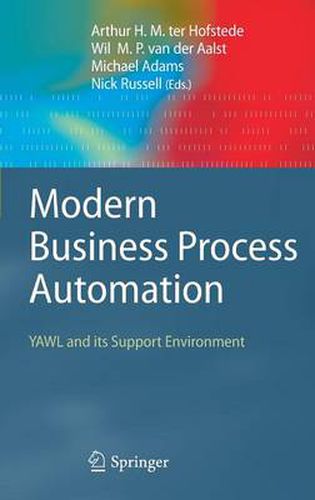Readings Newsletter
Become a Readings Member to make your shopping experience even easier.
Sign in or sign up for free!
You’re not far away from qualifying for FREE standard shipping within Australia
You’ve qualified for FREE standard shipping within Australia
The cart is loading…






This title is printed to order. This book may have been self-published. If so, we cannot guarantee the quality of the content. In the main most books will have gone through the editing process however some may not. We therefore suggest that you be aware of this before ordering this book. If in doubt check either the author or publisher’s details as we are unable to accept any returns unless they are faulty. Please contact us if you have any questions.
The ?eld of Business Process Management (BPM) is marred by a seemingly e- less sequence of (proposed) industry standards. Contrary to other ?elds (e.g., civil or electronic engineering), these standards are not the result of a widely supported consolidationofwell-understoodandwell-establishedconceptsandpractices.Inthe BPM domain, it is frequently the case that BPM vendors opportunistically become involved in the creation of proposed standards to exert or maintain their in?uence and interests in the ?eld. Despite the initial fervor associated with such standardi- tion activities, it is no less frequent that vendors either choose to drop their support for standards that they earlier championed on an opportunistic basis or elect only to partially support them in their commercial offerings. Moreover, the results of the standardization processes themselves are a concern. BPM standards tend to deal with complex concepts, yet they are never properly de?ned and all-too-often not informed by established research. The result is a plethoraof languagesand tools, with no consensuson conceptsand their implem- tation. They also fail to provide clear direction in the way in which BPM standards should evolve. One can also observe a dichotomy between the business side of BPM and its technical side. While it is clear that the application of BPM will fail if not placed in a proper business context, it is equally clear that its application will go nowhere if it remains merely a motivational exercise with schemas of business processes hanging on the wall gathering dust.
$9.00 standard shipping within Australia
FREE standard shipping within Australia for orders over $100.00
Express & International shipping calculated at checkout
This title is printed to order. This book may have been self-published. If so, we cannot guarantee the quality of the content. In the main most books will have gone through the editing process however some may not. We therefore suggest that you be aware of this before ordering this book. If in doubt check either the author or publisher’s details as we are unable to accept any returns unless they are faulty. Please contact us if you have any questions.
The ?eld of Business Process Management (BPM) is marred by a seemingly e- less sequence of (proposed) industry standards. Contrary to other ?elds (e.g., civil or electronic engineering), these standards are not the result of a widely supported consolidationofwell-understoodandwell-establishedconceptsandpractices.Inthe BPM domain, it is frequently the case that BPM vendors opportunistically become involved in the creation of proposed standards to exert or maintain their in?uence and interests in the ?eld. Despite the initial fervor associated with such standardi- tion activities, it is no less frequent that vendors either choose to drop their support for standards that they earlier championed on an opportunistic basis or elect only to partially support them in their commercial offerings. Moreover, the results of the standardization processes themselves are a concern. BPM standards tend to deal with complex concepts, yet they are never properly de?ned and all-too-often not informed by established research. The result is a plethoraof languagesand tools, with no consensuson conceptsand their implem- tation. They also fail to provide clear direction in the way in which BPM standards should evolve. One can also observe a dichotomy between the business side of BPM and its technical side. While it is clear that the application of BPM will fail if not placed in a proper business context, it is equally clear that its application will go nowhere if it remains merely a motivational exercise with schemas of business processes hanging on the wall gathering dust.